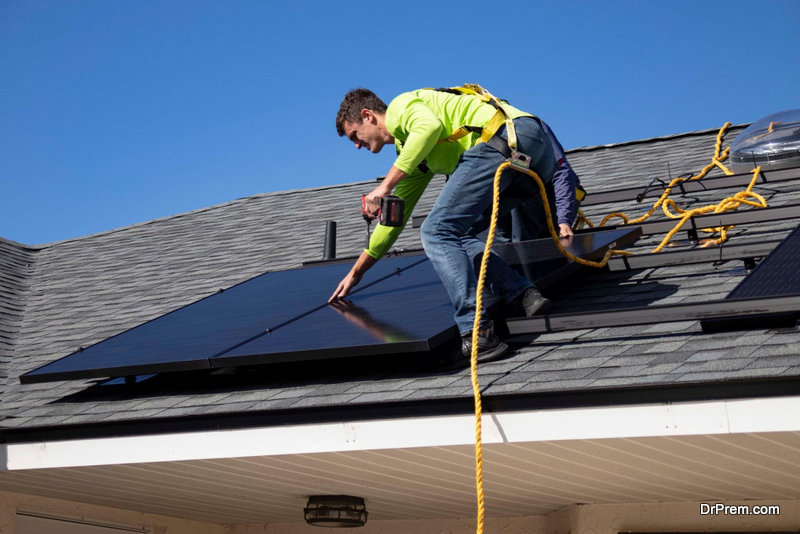In this modern era, solar energy undeniably shapes the trend in home improvement and sustainability. Now more than ever, people are considering the benefits and costs associated with transitioning to this renewable type of energy.
This article intends to provide a comprehensive exploration into the specifics of installing solar panels on a domestic property, focusing especially on the costs involved. With accurate statistics and facts framed around trusted sources and firsthand accounts, come enable yourself with the knowledge required to make an informed decision.
The Basics Considered Around Solar Energy
You must first understand some fundamental aspects of solar energy. The process starts by harnessing the sun’s raw energy, which is then transformed into usable power for your home through complex systems embedded within solar panels. Remember, the size as well as efficiency of these panels will determine how much power you can generate daily.
Cost Implies in Installing Solar Panels
Solar panel installation costs are influenced by many factors and can vary widely. However, most estimates land between $15,000-$25,000 prior to incentives, with location, home size, and energy use driving the precise expense.
Tax Credit Implications For Solar Panel Installation
Considerable federal tax credit also dispenses incentives, thus offsetting the cost of installation for homeowners who opt for sustainable energy solutions. Typically, this Federal Solar Tax Credit reimburses about 26% of total charges linked with panel installation.
State-specific Rebates and Incentives for Cost Reduction
Different states offer various incentives to encourage residents toward a greener existence. Oregon has been particularly pro-active in promoting solar energy adoption . This brings you right into our Oregon solar cost guide. Various incentives drastically reduce the installation fees, making this state quite attractive for solar energy use.
Financing Opportunities for Solar Panel Installation
Financing options exist to further aid homeowners who cannot afford the installation costs outright. These methods range from solar leases, loans, Power Purchase Agreements (PPAs), and more.
Solar Lease and How it Works
Solar leases work similarly to car leases by allowing you to rent solar panels for a lengthy period, mostly two decades. Such arrangements result in cheaper monthly electricity payments while saving you from hefty upfront costs.
Role of Loans in Financing Solar Panels
A comprehensive loan enables you to buy your solar panels; thus, you benefit from all the state and federal credits or rebates available. Options include home equity loans or lines of credit with favored tax-deductible interest.
The Benefits Involved with Power Purchase agreements
You might also offset your solar installation costs through a Power Purchase Agreement. A PPA arrangement means a third-party owns and maintains your system while you pay for the electricity generated.
Understanding the Solar Payback Period
It is vital to appreciate how long it will take before your solar panel investment begins paying off its initial cost. This is commonly referred to as the “solar payback period” and can vary between five to 10 years based on local energy rates, state incentives, and overall system cost.
Impact of Energy Rates on Solar Panel Costs
Your return on investment (ROI) for a solar system largely depends on your current electricity rates or future hikes in those rates. Higher charges lead to quicker payback times provided that the cost of your system remains constant. Therefore, energy costs are vital considerations.
Maintenance Costs for Solar Panels
You will also need to consider lifetime maintenance and repair costs as part of your overall adoption budget. On average, you should set aside between $150 to $400 per year for panel cleaning and upkeep.
Households Affecting Solar Panel Installation
The dimension and condition of your roof, the direction it faces, even the shade from adjacent buildings or trees can all influence how much electricity your solar panels will produce and, ultimately, the cost. Thorough site evaluations by professionals can help determine these variables.
Solar Panels Can Increase Home Value
When weighing the costs and benefits of installing solar panels, also consider the potential increase in your home’s value. Homes with solar systems tend to sell for more, as buyers appreciate the lower utility bills and reduced environmental impact. Factoring in this added resale value can shorten the solar payback period even further.
The Bottom Line for Solar Power Investment
In the end, transitioning to solar energy comes with various financial considerations including installation fees, financing opportunities, future electricity rates, local incentives, and maintenance costs. Understanding these elements will promote sensible decision-making.
Key Conclusion
Switching to solar power is a substantial yet worthwhile investment. Going solar lets homeowners slash electricity bills and help the planet, but first requires careful financial evaluation, as with any major investment.
The payoff calculation must weigh installation costs against utility savings and available incentives before moving forward. The actual price depends on your house situation and available financing means but the end results stand promising.
Article Submitted By Community Writer




